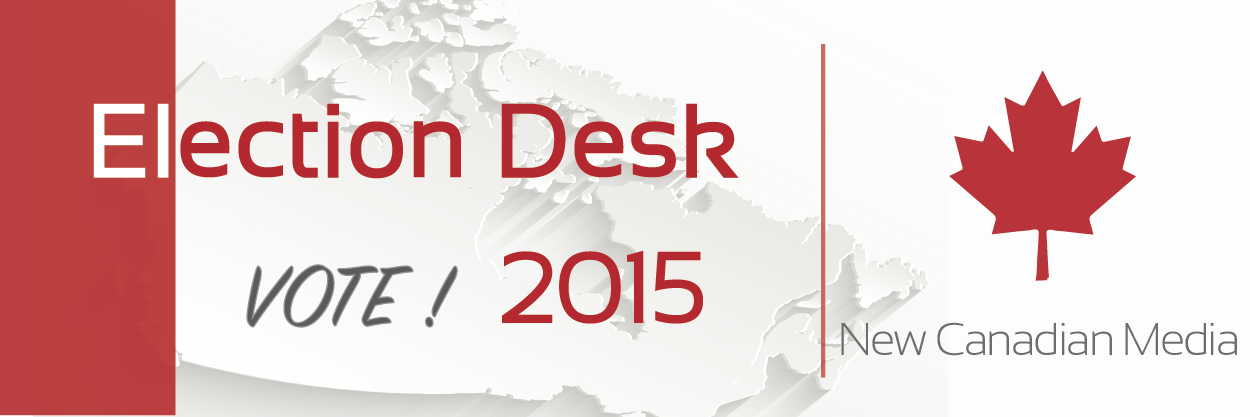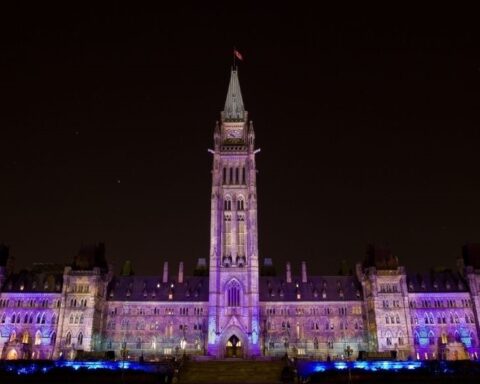What do you do when every other high school and new Canadian community organization decides it might be nice to host an all-candidates’ meeting? Must we attend every last debate we get invited to by every obscure community organization looking for the legitimacy and power of getting all the political parties to attend?
There simply isn’t enough time for any candidate to attend every debate, so we often recommend a lunch meeting.
Here’s a secret from inside a campaign: new Canadian communities can get a better hearing from a candidate over a businesslike lunch or breakfast than at a boisterous event.
Once, I would have advised a candidate to spend time with the leader of an organization or cultural group. That was when leaders of new Canadian communities could deliver their communities’ votes en masse. As new Canadian communities become woven into the fabric of the nation, they are less and less monolithic and loyal to one party.
Our research showed us there were four linguistic/cultural minorities in our community. We spoke with people in the four communities and three of them said to not bother translating any materials into their mother tongues. For the fourth we did translate a piece, and my candidate took it to their community dinner; none of them appeared to be very impressed.
Unlike my experience in major cities like Toronto, Montreal and Vancouver, in our riding’s major centre of population, minority linguistic and cultural communities are not easy to engage or to find. This may be due to smaller numbers.
I was at one event and was introduced to a man and I recognized the origin of his name, so I asked him if he was indeed of Punjabi extraction. He excitedly told me that in his many years in the community, no one had previously recognized that fact. That’s life in a smaller city.
Head counting
Maybe you remember the days when enumerators came to the door and the home-typed list of electors was posted on a telephone poll at the end of your street. Technology has changed all that.
As a Campaign Manager, I have been instructed to emphasize knocking on doors over everything else – canvassing. On the surface, it appears to be a fairly low-tech activity. But getting the candidate to the doors isn’t solely about the face-to-face meeting; no, indeed – it’s all about identifying our base supporters.
You’ll notice that when a candidate or canvasser greets you at the door, there is always a pad or a tablet handy. We are recording whether you are a supporter, leaning to us, voting for another candidate or undecided.
Back in our office, that data from our returning canvassers is scanned with a barcode reader and entered into a database. In my office there is the near-constant beeping of scanners reading voter info.
We store other information, too – who has a lawn sign; who wants one; who will volunteer; who donated funds, etc. Like most urban Canadian ridings, we have about 100,000 eligible voters. Our primary concern is to find our supporters and to get them to go out and vote, which all of us political types refer to as GOTV (get out the vote).
Once we know where our supporters reside, we will phone them on election day (what we in the political business call “E Day”). Every hour or so, my authorized scrutineers will visit the polling stations and retrieve from Elections Canada the sheets that provide the names of those who have voted. We call these bingo sheets.
Getting out the vote
We check the bingo sheets against our list of known supporters, and we will contact our supporters who haven’t yet voted to make sure that they, too, get out to vote.
Party headquarters insists that we use canvassing as a tool, load up the database with identified voters and then get out the vote. But there is also telephoning. An entire industry has grown up around it. First, I can use one of these services to “clean the list”.
That is to telephone everyone on the list from the previous federal election and eliminate those whose phones are no longer in service. Second, they can call and identify those who are my supporters, a lot faster than going door to door.
Finally, there is the dreaded “robo-calling”. I had my candidate record her voice on a one-minute recorded message that will be sent to every home phone in the riding.
Not everyone is comfortable with the scanning and database aspects of the campaign. In my campaign, many of the volunteers are seniors and they don’t want to fill in the tiny boxes on the canvassing sheets. So along with the tech, we do it old school.
Leading up to voting, Elections Canada provides each campaign with three progressively more accurate updated electors lists on thumb drive (preferred) or the voluminous “dead tree” edition. I have to say that the Elections Canada people are hard-working, efficient and conscientious. Their work is thankless.
Mad stress
My greatest stresses come from inside our camp, like when my candidate gets cornered in a debate and starts to freelance off party policy (I’ll be getting a call from party HQ demanding to know what was that about?). Also, we have the nervous nellies and the cranky people on our team – but they are volunteers, so they require special handling.
Worst problem is the shortage of volunteers. Volunteers are the lifeblood of the campaign … and we are having trouble finding enough of them to get the job done. I’m told that is a widespread problem. Without volunteers, there is no line between me and all manner of people who wander in off the street and demand service and your time. They think we are a retail business, when, we are a business office more than anything else.
Thus, some days while I am sitting in my office trying to write strategy and speeches or buy radio or print ads, I am also dealing with troubled people, people who are upset that we didn’t get lawn signs to them fast enough, and here comes the office cleaning service to request direction on what to do about the kitchen area.
Indeed, the so-called glamorous life of a campaign manager.
The author, who has chosen to remain anonymous, is a campaign manager for an unidentified candidate running in the forthcoming federal election. Read Part 1 here.
Publisher’s Note – New Canadian Media makes every effort to be transparent in its editorial operations and offers this anonymous writing only as a way for our readers to better understand the electoral process that underpins Canadian democracy. This piece is intended to be non-partisan and consistent with our journalistic criteria of fairness and balance. NCM welcomes comment or reply to this column.




